
We kindly inform you that, as long as the subject affiliation of our 300.000+ articles is in progress, you might get unsufficient or no results on your third level or second level search. In this case, please broaden your search criteria.


The publication is an outcome of activity of International Network C.A.L.M.A.Z, which deals with interdisciplinary cooperation in PE and geography. The authors are representatives of university departments in the Czech Republic, Slovenia, and Denmark. The publication aims to present how the participating countries approach, in their curricula, the cooperation in PE and geography. The cooperation is viewed from two perspectives – comparison of curricular documents help ascertain how this cooperation is embedded at the theoretical level. The questionnaire survey with teachers represents a probe into the realization form of the curriculum. In the conclusion, possible approaches to integration are discussed, and practical examples are presented.
More...
This fundamental textbook of history of sport deals with the historical periods of physical culture in the past, from ancient times to the origin of modern sports. Besides the world history of physical education, the work deals in detail with the history of sport in Czechoslovakia, not only in the period of the First Czechoslovak Republic, during the WW2 or in the post-war period, but also in the period of communist totalitarian regime. Final chapters, that reflect the evolution of physical education and sport in the Czech Republic in the past two decades, are of significant importance. It is one of the first complex compilations of this era.
More...
This book addresses the issues of the family and its educational functions by highlighting the role of people's parenting styles in the sporting and physical activities of their children. Among the factors that help to motivate children to take part in organised sport is the socially and culturally conditioned relationship between children, their parents and sports trainers. This creates possible clashes between the motivations, experiences and directions of the actors involved in this triangle. The influence of parents is crucial and irreplaceable, and particularly strong in those cases where they influence their children by undertaking regular joint sports activities with them. The target audience of the book includes parents, educators, trainers and the broader professional sports public.
More...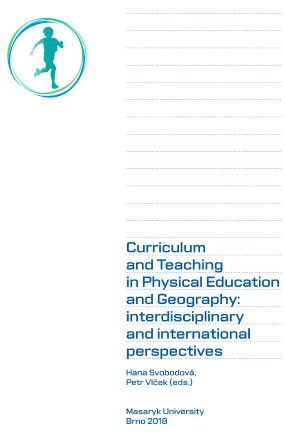
The book of proceedings addresses the lack of international knowledge and research in interdisciplinary curriculum development and teaching in the subjects of Physical Education and Geography. The authors analysed and compared pre-school, elementary, secondary and teacher education and especially school curriculum from different countries, e.g. the Czech Republic, the Republic of Slovenia and Croatia to reveal how integration of Physical Education and Geography can be embedded at different curriculum levels.
More...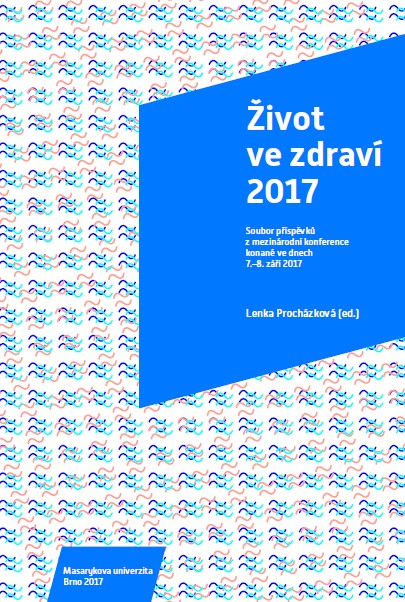
The book of conference proceedings sums up some chosen papers presented at the interdisciplinary conference Life in health 2017. The conference took place at the Faculty of Education of Masaryk University on 7th–8th September 2017. The papers deal with the general and specific approaches towards public health promotion and protection. The findings are adequately applicable in education of children and general population.
More...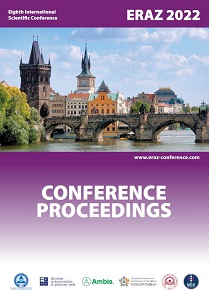
Nutrition is increasingly recognized as a key component of optimal sporting performance, with both the science and practice of sports nutrition developing rapidly. The sports nutrition market has witnessed robust growth in the past few years; it is gaining pace due to the increase in health awareness among the population, new product development, the rapid increase in urbanization, and growth in a number of sales outlets, health clubs, fitness centers and gyms. Athletes use a range of nutritional and diet strategies to improve sports performance. Nutrition plans need to be personalized to the individual athlete to take into account the specificity and uniqueness of the event, performance goals, practical challenges, food preferences, and responses to various strategies. A key factor is the related marketing used to reach the core aim of the athletes for specific sports nutrition so they can meet their energy and nutrient requirements, whether that is speed, endurance, recovery, or strength. The marketing strategies in the sports nutrition industry are wide. Companies understand the power of sports endorse¬ment, the trending on social media, and after all the factors of advertisement, through the different marketing communication channels impacting the athletes’ behavior for the final decision-making process of purchasing the product. In this paper the purpose is to investigate the effect of sport-related nutritional marketing as a communication strategy reaching athletes, and, its second relationship, the effect of the marketed sport-related nutritional products impact on athlete’s performance, from the athlete’s aspect. The importance of this paper is to examine a new topic of a connection between sports nutritional marketing and the eventual performance effect on a particular sub-category of athletes because very little research is being conducted on this topic of interest. The research framework used in this paper will help to guide future research and improve marketing communication strategies with great insight on what are the key methods to reach out to short and distance athletes from a marketing point of view, as well as the key factors that make marketed sport nutritional products impact on athlete’s performance.
More...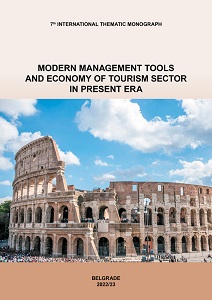
As has been stated extensively elsewhere, places have long used marketing as a planning and management tool, so it should come as no surprise that they would start to embrace the concept of place branding more and more. Undoubtedly appealing is the notion of discovering or creating something special that would set a location apart from others. Places plan and support transient events too, at the very least, increase awareness of their presence as well as create unique brand associations. These connections have to do with the event's organization and substance. It is demonstrating its ability to host the activity while also associating with it. Marathons are examples of athletic tourism. These occasions have been utilized by several locations to increase visitor demand during the past few decades. When we talk about sports events in Serbia, there is a noticeable increase in the organization of marathons, half-marathons and pleasure races, which very effectively brands the destinations where these sports events are held.
More...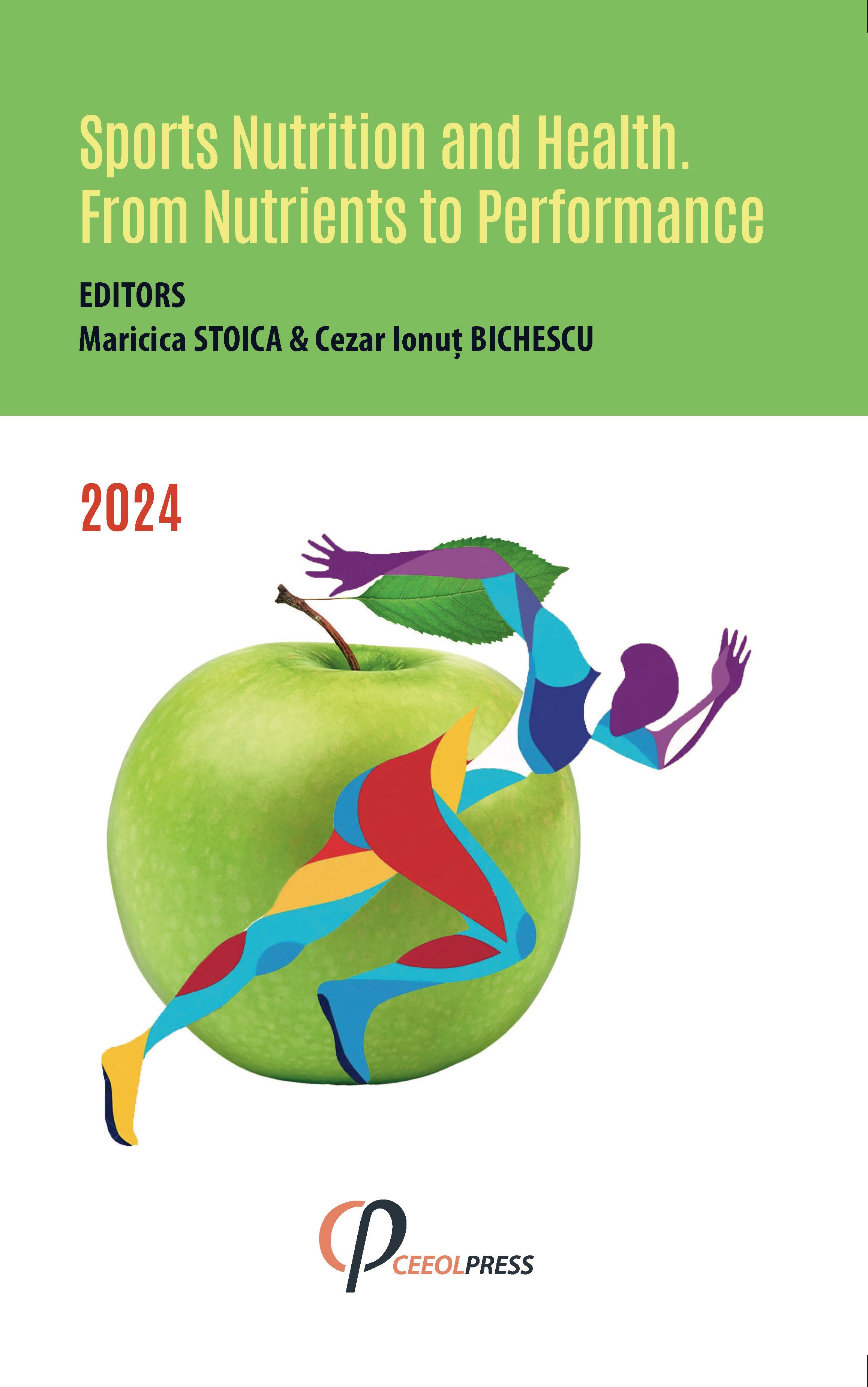
Carbohydrates are a part of the essential macronutrients required for human nutrition and constitute the preferential energy substrate in physical effort. They are necessary in certain proportions, namely 50–55% of the daily energy intake in the general population and up to 65% of the daily energy intake in performance athletes. Carbohydrates are present in various forms (simple or complex) and with specific ingestion indications (type, amount, before, during, and after physical effort) for athletes or people practicing physical activity. Optimization, flexibility, and personalization of carbohydrate consumption are necessary to achieve the maximum expected and desired physical performance and to avoid adverse effects due to physical activity: fatigue, muscle pain, metabolic (
More...
This chapter explores the classification, sources, and roles of fatty acids in human health and sports nutrition, emphasising their benefits for athletic performance. Fatty acids are categorised as saturated and unsaturated (monounsaturated ω-9, polyunsaturated ω-3/ω-6). Essential ω-3/ω-6 fatty acids are vital for cellular functions and metabolism. Marine ω-3s, particularly eicosapentaenoic and docosahexaenoic acids, reduce inflammation, improve muscle recovery, anaerobic endurance, and oxygen efficiency, which are crucial for athletes’ energy and nutrient needs during intense physical activity and recovery.
More...
This chapter delves into the role of food supplements in boosting athletic performance and aiding recovery within sports nutrition. It traces the evolution of supplements, driven by advancements in sports science, and categorizes them by function. The chapter emphasizes athletes’ nutritional needs, highlighting the importance of macronutrients for energy, micronutrients for physiological functions, and ergogenic aids for performance enhancement. By reviewing scientific literature, it stresses the importance of tailoring supplement intake to individual metabolic and genetic profiles for optimal health and performance. The chapter concludes by exploring the future of personalized nutrition, enhanced by biotechnological advances, to improve supplement efficacy in sports.
More...
This chapter highlights the critical roles of ghrelin, insulin, and leptin in regulating energy metabolism, emphasising their complex interactions. Understanding these hormonal mechanisms is crucial for developing strategies to manage body weight, treat metabolic disorders, and combat diabetes. Ghrelin increases hunger, food intake, and fat storage while influencing glucose levels and insulin sensitivity, especially during caloric restriction. Insulin promotes glucose storage, protein and lipid synthesis, and inhibits fat breakdown, essential for maintaining glucose homeostasis. Leptin, on the other hand, reduces food intake, boosts metabolic rate, improves insulin sensitivity, and plays roles in reproduction and immunity.
More...
The endocrine system, through its hormones, is essential for both overall bodily functions and sports performance. Hormones are biologically active chemicals that regulate physiological processes, influence metabolism, and mobilise the body’s energy reserves. Their role becomes particularly significant during physical activity. When muscles contract, hormones are secreted and circulate in the blood, triggering a cascade of biochemical reactions that affect both the working muscles and the entire body. In athletes, hormones are crucial for developing motor skills, enhancing, and sustaining performance, and aiding recovery after intense exercise.
More...
Human body mass is a quantitative parameter which varies constantly throughout life. In fairly large selections, individuals can be found with limited valuables of body mass within specific limits of this integral parameter, but, most times, the specific limits of body mass are not fixed exactly: variations of this index in adult humans are always to be taken into account. Quantitative characteristics with variable values can be presented in a certain order, for example, from the lowest to the highest values [Dorgan, 2008; Fung, 2020]. When attempting to assign these body mass values to certain classes or groups, the lack of natural classification criteria was noted. Therefore, it is necessary to carry out an artificial distribution according to external criteria. Thus, the allocation of athletes to GCs is an artificial act of classification based on agreements and compromises but also on empirical requirements and data from sports practice. No artificial classification meets the requirements of the science of classification – taxonomy. For this reason, researchers tend to approximate existing classifications at least to their scientifically founded variants. This goal is also pursued in the present paper. In our opinion, a solution to this problem can be approximated if the methods of determining the natural, in a certain sense ideal, individual body mass of man are determined.
More...
Overweight is defined as a condition characterized by an increase in body weight beyond the level considered optimal due to the excessive accumulation of adipose tissue. This condition is positioned between the ideal weight range and the obese stage, as determined by body mass index. Among children aged 6–11 years, the prevalence of overweight has doubled, rising from 7% to 13%, and among adolescents aged 12–19 years, it has increased almost threefold, from 5% to 14%. According to further data, 11.8% of adolescents aged 12–17 are classified as overweight, with 2.3% meeting the criteria for obesity. The World Health Organization reports that over 41 million children under the age of 5 and 340 million children aged 5–19 are currently overweight. A significant proportion of these affected children (35 million) reside in developing countries, where the incidence of obesity is on the rise. The purpose of this theme is to develop and implement adapted physical education activities that contribute to improving the lifestyle of overweight adolescents, promoting health, and reducing the risk of obesity.
More...
This chapter addresses a crucial topic for modern science, particularly in fields like physical education, sports, kinesiology, recreation, medicine, and psychology. The focus is on developing and analyzing models and exercises designed to prevent and reduce excess weight in children and adolescents through physical activity paired with a rational diet. With about one-third of students and adolescents currently facing excess body weight, this study offers valuable insights for those affected and those aiming to prevent such issues. The recommended exercise routines and dietary guidelines serve as practical tools to help achieve positive health outcomes, minimizing the need for surgical interventions
More...
Currently, nutrition is an important factor influencing sports performance. The recent scientific research proves that nutrition is one of the components that significantly reduce the risk of injury in athletes while having an essential role in maintaining their body weight.
More...
Tendons are the connecting fibers between groups of muscles and the bony skeleton of the human body. All together, they ensure people’s mobility, whether sports or professional work activities. The level of their development greatly depends on the quality of human life or the sports results in one event or another, so the specialists are always studying the ways of training and perfecting the human body tendons. The largest tendons of the human body are the Achilles Tendon and the tendons of the upper and lower limb muscles. Exaggerated physical efforts, incorrect nutrition, and inactive lifestyle can often lead to various tendon ailments, up to their rupture. Today, there are several methodologies for the recovery and restoration of the tendons of the human body, and the most frequently applied and most effective are those described in the given article; here, we are talking about both kinetotherapeutic and surgical methodologies.
More...
Food security is critical due to rapid population growth and increased resource consumption. Edible insects offer a healthier, more sustainable macronutrient source than traditional animal foods. They can help meet protein demand by 2050, reducing reliance on livestock. Insect-derived ingredients can enhance food and beverage nutritional profiles. This chapter highlights the nutritional value of commonly consumed insect species, emphasizing their importance as a macronutrient source.
More...
The sports nutrition market stands at the forefront of the burgeoning wellness industry, driven by an increasing global focus on fitness and health. As more individuals commit to active lifestyles and seek optimal performance, the demand for specialized nutrition that enhances athletic capability and recovery has surged. This chapter delves into the diverse landscape of the sports nutrition market, exploring the major trends that influence the sports nutrition market in the digital era, market segments, major key players in the global sports-nutrition market, important global regions for the sports nutrition market, and opportunities and challenges.
More...